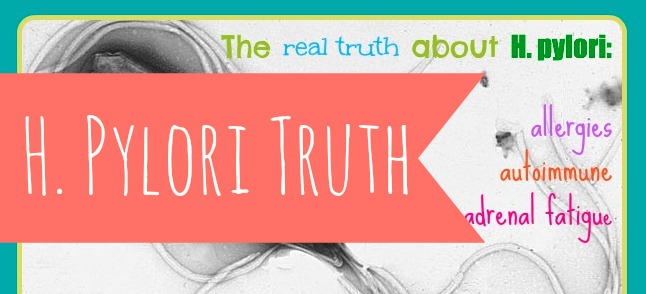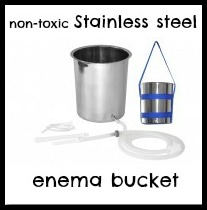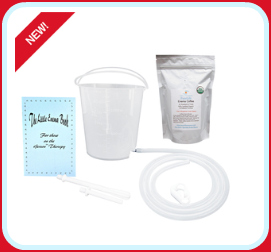
Intestinal dysmotility definition
First things first, what exactly is “intestinal dysmotility?” Dysmotility is a condition in which muscles of the digestive system become impaired and changes in the speed, strength or coordination in the digestive organs occurs. In the normal small intestine, liquefied food and secretions including digestive enzymes are pushed onwards by waves of muscular contraction. source

Usually when we get a diagnosis, our next question is, “what is the cure?” But unfortunately, not everything in life is that simple. According to popular medical sources “Unfortunately, many causes of dysmotility cannot be cured, and symptomatic treatment is offered.”
Personal experience
Last year I was diagnosed with specifically small intestine dysmotility. That is just one type of dysmotility a person can have. There is also dysmotility of the stomach which is called gastroparesis. As well as dysmotility of the large bowel, which usually results in chronic constipation. If a gastroenterologist thinks you may have slowed intestinal motility, they can do a gastric emptying scan (GES) which involves eating a radioactive meal (usually eggs) and then tracking and measuring the amount of time it takes to empty (4-6 hours is usually measured).
The Mayo clinic came up with an even longer lasting test that included tracking the radioactive isotope pill past 24 hours and tracking through the entire digestive tract. This is very helpful for cases where small intestine dysmotility is suspected. For dysmotility in the colon an anal manometry can also measure the function of the colon muscles. I personally did the long 24 hour GES, and upper endoscopy, and an anal manometry.

There are many reasons why someone could have dysmotility in their digestive tract. I think all of us who suffer from one of these dysmotility conditions, can agree that it can be really uncomfortable and life altering. Intestinal dysmotility can interfere with daily life and requires trials of diets, medications and therapies. I am no expert, but I have a few tricks that work for me and I continue to search and learn. I’m always willing to try something if it has potential of helping. Sometimes we just can’t settle with a single medication and the words “I’m sorry, there is nothing more you can do.” Those words almost prompt me to search even harder, because I don’t give up!
What treatments are available?
The treatments my local gastroenterologist and Mayo Clinic doctors provided were pretty standard. There are medications that can treat dysmotility of the stomach (example: Reglan or erythromycin) and the colon (example: Linzess or other constipation medications). Small intestine dysmotility has little research because it requires the extra time to track through the small intestine that most clinics don’t have access to do. Unfortunately, not many medical journals are published yet about small intestine dysmotility and it still has yet to make it in the major medical text books. Surprisingly old medical journals still prescribe a dangerous medication that was available in 1998.
Whats the root?
Some doctors at Mayo clinic wonder if it could have an autoimmune component. It is common for people with autonomic neuropathy to have digestive complaints or even dysmotility because the gut is an autonomic function of the body. If there is an underlying cause, its also good and necessary to treat that because it’s possible the digestive motility can get better.
Mine has an autonomic neuropathy root and each month as I work on therapies and treatments for this condition, surprisingly my digestive system sees improvement. I share details about my initial diagnosis from Mayo here. When my blood pressure, heart rate and vestibular system started to re-balance, my body got into a better “rest-and-digest” mode instead of overacting like it typically does when my autonomic system flares. Even though I have seen improvements since my initial diagnosis, I still need to routinely keep up with my at home treatments mentioned in this post, to ensure my intestinal tract is moving. Flare ups do happen after a stress like an infection or even a big life change, so that is something I am learning to handle as life goes on.
Infections
Doctors can typically asses for infections in the gut like h. pylori (read my post here), SIBO, candida, etc. Using diet, enzymes, herbals and sometimes medications to eradicate these infections can actually help your gut motility as well. Here is the reasoning behind obtaining infections in a motility disorder: “Small bowel motility disorders also predispose to the development of SIBO, because bacteria may not be effectively swept from the proximal bowel into the colon.” source

“Normal GI motility involves a complex, tightly coordinated series of events designed to move material through the GI tract. During periods of fasting, a migrating motor complex (MMC) develops approximately every 90-120 minutes to sweep residual debris through the GI tract. Several studies have demonstrated that abnormalities in the MMC may predispose to the development of SIBO.” source
Food choices

My doctors have come up with the idea to target the stomach and colon because there are not yet treatments available specifically to target the small intestine. The small intestine muscles are important because that segment of your gut is responsible for absorbing nutrients. Some people need a feeding tube if their dymotility does not get better, so they can absorb their nutrients and function. Surprisingly, I avoided this intervention but instead tried many things to improve my dysmotility and eat food. There have been times where “liquids only” were the best option and my doctors went back and forth helping me choose between chewing food and nutritional drinks/smoothies. The cleanest supplement drink I have found is from Kate Farms. If you design your own nutritional smoothie, adding easily digestible fats, vitamins and proteins becomes necessary.

Chewing can help kick start peristalsis and facilitates enzyme and saliva production. Choosing foods that empty faster (high water content foods: fruits, vegetables and carbs) can make a big difference in the speed of your motility. Proteins take longer to digest and then fats take the longest. Here is a guide line for the digestion time of each food. Working with a nutritionist or tracking the motility of your food choices is a good idea so you can work out a good long term eating plan without causing problems or leaving you with nutritional deficiencies. Having adequate stores of minerals (like magnesium) and electrolytes is important for nerve connections and muscle functions involved in peristalsis. I suggest nunn tablets, electrolyte powder, natural sea salt for when I need an electrolyte boost. Keeping hydrated is also very important for intestinal motility.
Colon cleaning

Keeping the colon clean is a must for proper motility higher up in the digestive tract (its all connected remember). There have been times where I was constipated and could not keep down food because the pressure system in my intestines was too intense. Exercise can help loosen things up, sometimes isn’t enough or can be hard on the system for someone with autonomic neuropathy so it may not help constipation.
Enemas: Enemas (learn how to do them here) can be an easy at home solution to quickly clean out the lower portion of your bowel. Even though it cannot reach very high up into the intestines, the water stimulates nerves in the rectum and sigmoid, which will signal the colon muscles to contract. Filtered water, an enema kit and a bathroom is all you need! You can choose from a stainless steel bucket, a plastic bucket or a hanging silicone bag.
Colonics: A colonic or “colon hydrotherapy” can efficiently clean out the colon with water to help facilitate motility higher up in the intestines. A colonic can actually irrigate purified water into almost the whole length of large intestine. A trained therapist can use quick light pressure releases and alternate the water temperature, along with abdominal massage to help your body release fecal matter. Colonics are known to tone and retain your colon muscles, which will help your peristalsis contractions. Colonics were a irreplaceable therapy I used over the years to help give my colon proper muscle tone and overtime my peristalsis became stronger and more functional.

Peristeen: If you can get a diagnosis for a “neurologic bowel“, that may open up a new window for a colon irrigation device that can reach higher up into the colon called Peristeen. Similar to an enema, it pushes water into the lower colon and triggers a bowel release. The difference comes in the design of the Peristeen device, because it uses a small FDA grade silicone ballon that you can inflate and deflate. You insert the catheter (a trained Peristeen therapist will determine the right inflation size for you) and then inflate the balloon once it is inside the rectum. This creates a light “seal” that insures the water can slowly build up higher until you need to release the water along with the feces. If you are interested, the company is very knowledgeable and can possibly help you find a doctor to give the initial diagnosis and then training for this take-home therapy.
Medications and herbs
Like I mentioned earlier, medications can be life saving for those of us with intestinal dysmotility. Rgalan and erythromycin loose effectiveness or have bad side affects, so they are best used periodically. Laxative medications are usually better than stool bulking agents, because you want to keep things moving (not make things bigger to move through).

Suppositories can help too soften the stool, but also can signal the colon to contract and start peristalsis movement. HCL, enzymes, sour foods all have the natural ability to kick start digestion in the mouth or stomach. Herbs like senna, cascara sagrada, cats claw, aleo vera, ginger, or rhubarb can help contipation as well. Smooth move tea is a powerful little tea you can drink that can help ease symptoms too.
Remember that the whole intestinal track is all connected so targeting the stomach and colon will help the small intestine move. Probiotics can help motility if you get the right strain to balance your colon bacteria. For me it has been changing it up over the years and you can see what I have tried on my supplements page. Herbals and diet can be helpful for keeping yeast in check too, which can lead to considerable bloating and inflammation.
Colon massage
One thing I took extra interest in when I went to colonic school, was the techniques used to massage the colon. You really have to know the segments of the intestine to properly massage in the correct direction. It can be pretty simple if you look at a chart and work your way massaging the stomach, by following the natural movement of the colon structure.

Typically you start on the right side (by you illeocecal valve and cecum) and go up the ascending colon, then across the transverse colon and down again (ending on your left side in the sigmoid). Its easiest to use the base of your palm to have enough pressure while massaging the belly along the colon structure. Since your colon is made up of rounded like connecting pouches (called a haustra), its beneficial to massage over the areas that seem “harder” with circular movements pressing down. You can massage over a t-shirt or you can apply a non toxic lotion or food grade oil to get more movement with the massage. An drop of digest oil massaged on the skin can help relax the muscles and tissues as well.
Visceral manipulation

According to the Barral institute “Visceral Manipulation (VM) was developed by world-renowned French Osteopath and Physical Therapist Jean-Pierre Barral. Comparative studies found Visceral Manipulation beneficial for various Digestive Disorders: Bloating and Constipation, Nausea and Acid Reflux, GERD, Swallowing Dysfunctions.” You can watch this YouTube video for a good easy explanation on Visceral Manipulation.
“In Visceral Manipulation, individual structures are treated with specific techniques to improve mobility around that structure and motility within.” source
I was recently referred by my doctor and a pelvic floor specialist to try visceral manipulation. She found my abdominal muscles have separated slightly to compensate for the digestive ailments I suffer with. I am looking forward to seeing if the manipulation helps my digestive system and motility and will keep you updated.
Pelvic floor therapy was helpful, but due to the nature of my motility problem, I need work higher up in the abdominal region. Pelivic floor therapy is useful for mainly constipation and colon symptoms. Though Visceral manipulation can help this too, and I found a fascinating study about it helping constipation in a woman here.
At home tools

Keeping up with daily at home therapies is essential to keep my intestinal tract moving. I notice if I don’t do at least one of these things daily, my abdominal region gets swollen and things inside get stagnant. Of course everyone has a different body and you will find your own preference to ease symptoms overtime. If I am having a flare up, I make it a point to do several at home therapies during the day to keep ontop of the pain and discomfort.
Every night I sleep with a heating pad wrapped over my abdominal region. Yes every single night and I don’t go without it. The heat relaxes the muscles and penetrates through to eventually relax the intestines. I like this heating pad because its long enough and wide enough to wrap around my whole abdominal region. Another option is using a hot water bottle and place it over a specific area on your belly. If you want to take it to the next step, you can do a castor oil pack which will increase blood flow to the intestinal region, decrease inflammation and promote lymph flow. Here is the castor oil and wool flannel I use.
Pressure is an important tool when the intestines are struggling to function. I find that an electric massager is one of the best remedies when my abdomen physically hurts due to lack of intestinal motility. It is not only calming, but very efficient and gives the right amount of movement and pressure to get things moving almost every time. I find that a massager works better than self colon massage because you are more focused and relaxed. I also use a weighted blanket, but actually I specifically use a lap pad size, which I simply lay across my abdominal region. I find it calms my anxiousness I typically get when I am in pain, but the pressure also helps my abdomen relax the muscles and prevents subconscious tightening of stomach muscles. The more tense we are, the harder it is for our rest-and-digest mode to kick in. Any little thing helps.
Another tool I use for muscle tightness and pain is an EMS/TENS unit. It’s simple and you can put it on a low pulsating frequency to stimulate the muscles and nerves. The EMS (electronic muscle stimulation) mode is used to help inflammation and swelling in a specific area. The TENS (transcutaneous electrical nerve stimulation) mode can give relief for chronic pain by sending comforting impulses to the nerves to eliminate pain you feel. I place the sticky pads on my abdomen area and let the stimulation do its work.
We can’t forget about posture and breathing! I always try to take full “belly breaths” to calm by body and promote digestion. There is research to support that deep breathing works for digestion. “The “fight or flight” response causes blood to move from the gut to the larger muscles, which interferes with digestion, weakens the immune system and increases inflammation.” It’s also important to understand the gut-brain-connection and how our emotions and stress play a role in our digestion and gut motility. Lastly, focusing on your posture on the potty is essential for your colon to properly align and release the waste you have inside. This is the squatty potty I use.
That’s all I have for now, and I hope you find something that works to help ease your symptoms of intestinal dysmotility.
![]()






















Great post. Thank you for sharing your experience! I am guessing you have incorporated chiropractic (which can improve autonomic function), but have you seen a functional neurologist chiropractor? (FN doctor locator: https://acnb.org/DoctorLocator.aspx). FN can help restore neurologic input into areas of the body that may not be getting the input it needs. For example, FN docs can help design exercises and interventions that improve vagal (nerve) tone (which essentially controls digestive processes). But there are many other interventions they could recommend for a person based on a detailed evaluation. Here are a couple sites that might be helpful for research: https://carrickinstitute.com/ and here: https://drknews.com/
Yes I do! Thanks for adding this too 🙂